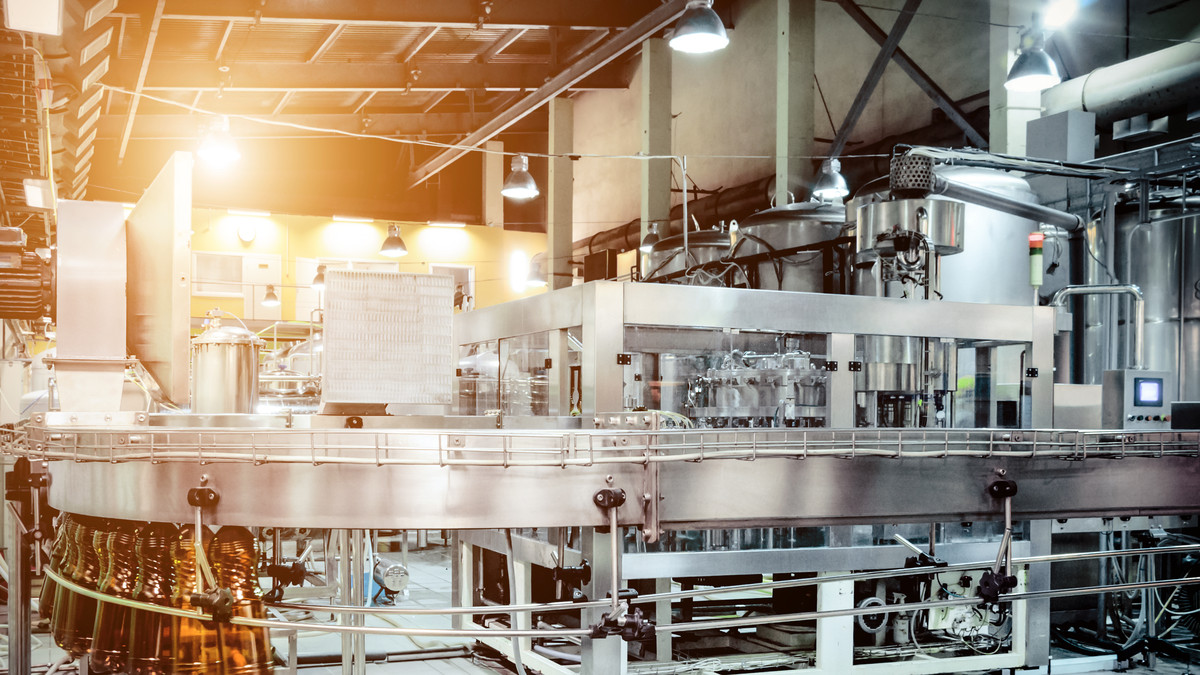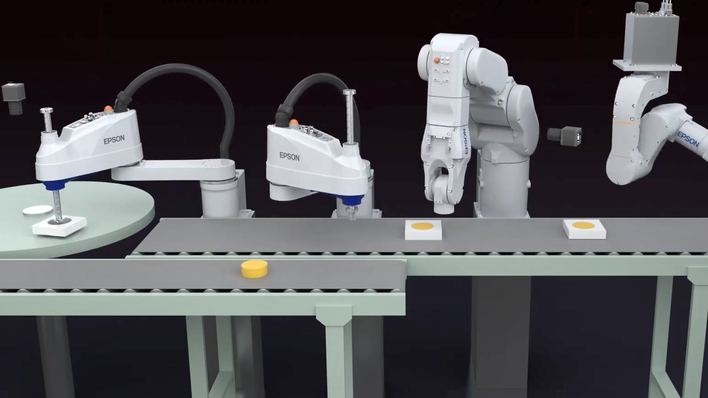In the world of robotics automation, the key to success is often in the details. Once you’ve scoped your needs and documented the process, it’s time to focus on the elements that are needed to truly customize the process automation to your unique needs. For factory leaders, this means honing in on the small but critical decisions around how to move parts, what end-of-arm tooling solutions are needed, and more. Here’s a closer look at five challenging questions you may encounter during your automation component selection — and how to successfully navigate them.
Do you need remote vision capabilities?
Today’s robotics systems don’t just work hard; they can also be paired with optics for powerful vision capabilities that increase the precision of the work they do at several points in the automation process. Not every factory layout or production automation requires vision. However, there are a few common scenarios where this can be helpful:
- Parts pickup: Due to space constraints or other issues, it may be difficult to develop a parts-feeding layout that works well with high precision assembly. In these cases, vision-guided robots can pick up parts and then feed them further into the process.
- Measuring: Does any part of your process require measuring?
- Scanning: Vision-guiding solutions enable robots to scan barcodes, labels, and other markers that may be part of the manufacturing process.
- Conducting inspections: Vision technology can help improve your QA by involving robots in the inspection process. Robots can inspect surfaces, packaging, component quality, final placement and defects.
What’s the difference between feeder types on the market today?
Getting parts from point A to point B is the heartbeat of a successful automated process. Known within the manufacturing industry as “parts presentation,” this part of your setup dictates how your factory will get individual components to your robot for assembling. Choosing the right sequence and equipment has a significant impact on every element of your productivity — especially speed. When you’re designing your process, there are different types of feeders to choose from, depending on your needs. Some to consider include:
- Flex feeders: Flex feeding systems are designed to work with a range of parts. This solution includes the ability to use vision-guided robots to select the parts they want during the assembly process.
- Linear feeders: A linear feeding system is similar to a conveyer belt. These systems include conveyors or use vibratory technology to move parts along the system to the robot.
- Bowl feeders: These feeders are typically used for more routine components. Vibratory bowl feeders can be used for a range of materials. When gentler pressure or high-speed production is needed, centrifugal bowl feeders can be a great choice.
How can you customize your end-of-arm tooling?
Once you’ve determined how you’ll get your parts to the robot, it’s time to evaluate your need for end-of-arm tooling (EOAT). EOAT solutions are a standard aspect of the manufacturing process. During the automation process, you’ll identify your needs, including what standard end-of-arm tools you require and whether you’ll need custom solutions. Customization can come in the form of personalized tools, or the way the EOAT design and build is implemented at your factory. EOATs are designed to go onto the end of the robot. They interact with the environment and help execute the production process. Considerations when choosing them include:
- Power source: Do you want electric, hydraulic or pneumatic-powered tools?
- Outline your application needs: What will the tools be doing? Some common tasks include picking up components or moving them between locations.
- Different types of tools: There is a wide range of end-of-arm tools. Once you define your needs, you can begin to explore the benefits of various tools and determine which best fits your needs.
What do you need in a base to stabilize the whole system?
Your robot’s base is the foundation of the whole project, yet it’s also the piece that often gets the least amount of scrutiny. There is a range of base options, from tables and blocks to robotic pedestals. Certain robots pair well with pre-made bases; other production automation projects will require customization to work well. Factors to consider when selecting a base include:
- Can it support the weight of your robot, including the machinery and maximum payload?
- Does the base have the ability to be agile enough to accommodate the motion of your production process, without destabilizing or slowing down production?
- Do you need solutions such as cooling troughs or surface grinding for precision?
- Finally, are there aesthetic considerations that the base needs to accommodate through custom paint, lacquer, or other approaches?
What role does IT play in meeting factory standards?
Another layer to the automation process is the role of your IT department in ensuring that the robots and automation you work with meet factory standards. Engage your IT department early on in the process, as well as during component selections. Underlying infrastructure can impact your long-term success. Here’s a quick checklist of factory standards to consider:
- What role does IT currently play in your production process? Some factories have heavily integrated systems, while others are technology-light. Define the scope of IT involvement and how existing systems will support or integrate with incoming solutions.
- Do you have a standard fieldbus communications platform? Fieldbus platforms are an essential role in smart manufacturing, allowing you to virtually connect hundreds of different points to your core robotics controller.
- Are there standard protocols that you use? Different industries, and even simply different systems, use a range of protocols to communicate. Common options include Ethernet/IP, ProfiNet, DeviceNet, SmartWire-DT, and Varan.
- Are there any vision components, such as cameras, lasers, or processors, that need to be considered?
- How do your components relate back to your system’s safety controller program?
- Are there any compatibility, communications, or other issues that need to be considered in relation to the robotic controller or the larger industrial network?
Attention to detail throughout the automation process is time-consuming, but it helps ensure that the payoff for your investment is significant. Automation components help customize the top layer of your robotics experience to your unique needs. Today’s smart manufacturing opportunities are using vision, end-of-arm tooling, and feeders to speed up production while taking steps to make sure robotic solutions are fully supported by both a solid foundation and the right technology resources.
Are you ready to learn more about robotics automation? Download Automation 101: A Step-by-Step Guide to Getting Started with Robotics today!
![]()



